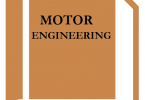31. In ship construction, a large number of watertight bulkheads results in
- increased capacity to set flooding boundaries
- decreased capacity to set flooding boundaries
- reduced compartmentation
- greater deck load capacity
ANS.: A
- The penetration of a watertight bulkheads and watertight decks by rigid nonmetallic piping is prohibited except when
- using an acceptable metallic fitting, welded or otherwise is attached to the bulkhead or deck by an acceptable method
- the rigid nonmetallic plastic pipe is at least of schedule 160 and a metallic shut off valve is provided adjacent to the through deck or bulkhead fitting
- metallic shut off valves are welded to nonmetallic hull materials
- two non-remotely operated metallic valves are installed on either side of the deck or bulkhead regardless of accessibility
ANS.: A
- The potential weakest part of the anchor chain would be the
- stud link
- solid link
- fluke link
- detachable link
ANS.: D
- The purpose of the vessel inclining experiment is to
- determine the location of the metacenter
- determine the lightweight center of gravity location
- verify the hydrostatic data
- verify data in the vessel’s operating manual
ANS.: B
- When the height of the metacenter has the same value as the height of the center of gravity, the metacentric height is equal to
- height of the metacenter
- height of the center of gravity
- same as half the height of the metacenter
- zero
ANS.: D
- When a vessel is floating upright, the distance from the keel to the metacenter is called the
- metacentric differential
- height of the baseline
- height of the metacenter
- righting arm
ANS.: C
- In small angle stability, when external forces exist, the buoyant force is assumed to act vertically upwards through the center of buoyancy and through the
- center of gravity
- center of flotation
- metacenter
- metacentric height
ANS.: C
- The horizontal distance between the vertical lines of action of gravity and the buoyant forces is called the
- righting arm
- metacentric height
- metacentric radius
- height of the center of buoyancy
ANS.: A
- The inclining experiment conducted on a merchant ship is the method for determining the exact location of the
- ship’s displacement in seawater
- position of the ship’s center of gravity
- position of the ship’s center of buoyancy
- position of the ship’s metacenter
ANS.: B
- Structural bulkheads on a ship are usually
- continuous
- watertight
- transverse
- non watertight
ANS.: B
- Joiner bulkheads on a ship provide
- compartmentation
- watertight integrity
- structural support
- tank boundaries
ANS.: A
- When the ship’s bulkheads are reinforced against bending and bulging, the bulkheads are provided with
- stanchions
- girders
- stiffeners
- rabbits
ANS.: C
- A vessel’s immediate protection in the event of a broken stern tube is a/an
- aft collision bulkhead
- stern frame bulkhead
- after peak bulkhead
- aft machinery space watertight bulkhead
ANS.: C
- The tailshaft is usually supported by the
- spring bearings
- tail bearings
- stern tube bearings
- propeller bearings
ANS.: C
- A bronzed sleeve is secured to the propeller tailshaft by
- keying
- shrinking
- threading
- pressing
ANS.: B
- A continuous watertight bulkhead on a ship may also be a/an
- structural bulkhead
- exterior bulkhead
- centerline bulkhead
- joiner bulkhead
ANS.: A
- Regarding a ship construction, bulkheads in the quarters are generally
- structural
- watertight
- non-structural
- continuous
ANS.: C
- Bulkheads forming part of the tanks on a ship are stiffened to withstand
- deck loads from above
- dynamic forces while afloat
- hydrostatic pressure
- overpressurization
ANS.: C
- The decks of a ship are supported by transverse members called
- trusses
- deck longitudinals
- deck beams
- web frames
ANS.: C
- Between the side frames of a ship, support for the deck beams is provided by
- stanchions
- brackets
- web frames
- deck stringers
ANS.: A
- Deck beams on a ship are generally spaced at equal intervals and run
- longitudinally
- vertically
- transversely
- intermittently
ANS.: C
- The deck plating on a ship is supported primarily by deck longitudinals and deck
- girders
- stanchions
- frames
- beams
ANS.: D
- The deck loads on a ship are distributed through the deck beams to the
- frames
- hull
- stringers
- plates
ANS.: A
- Compared to internal structural plating, the exterior hull plating on a ship is usually
- stronger
- thinner
- more corrosion resistant
- a lower grade steel
ANS.: A
- The conical steel or composition cone installed on a propeller, known as a fairwater cone, provides which of the following benefits?
- reduces water resistance
- helps with lubrication
- protects the nut
- all of the above
ANS.: C
- Which of the devices listed prevents water from entering the ship’s hull via the propulsion shaft?
- stern tube packing or mechanical shaft seal
- deflector ring and drain
- spring bearings
- oiler rings
ANS.: A






An excellent initiative. Keep it updated with technology and regulations.